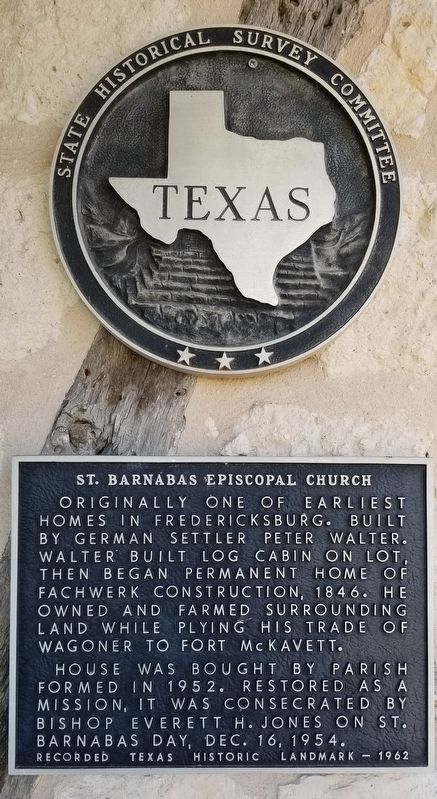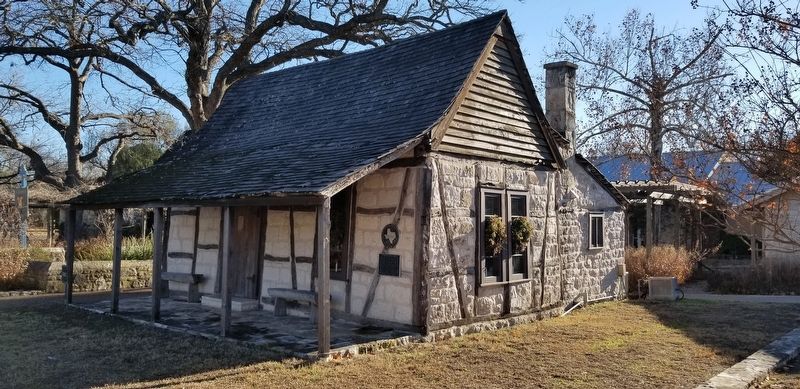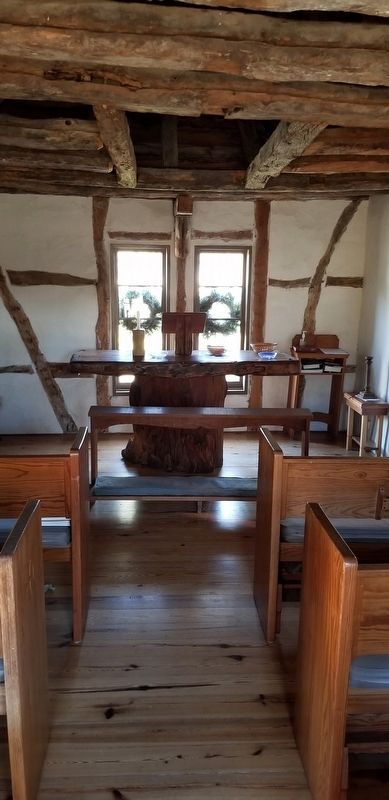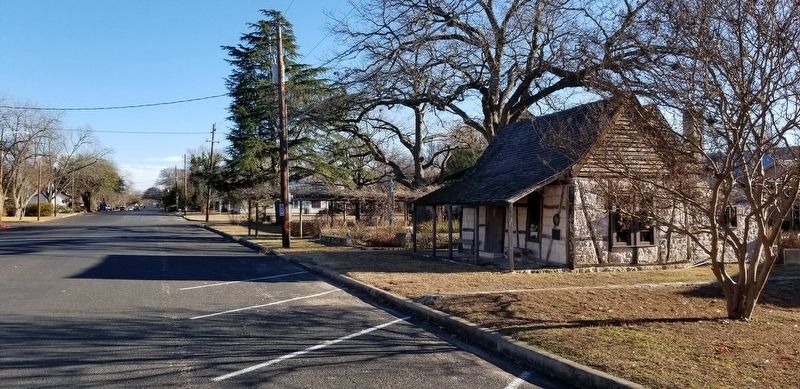Fredericksburg in Gillespie County, Texas — The American South (West South Central)
St. Barnabas Episcopal Church
Originally one of earliest homes in Fredericksburg. Built by German settler Peter Walter. Walter built log cabin on lot, then began permanent home of fachwerk construction, 1846. He owned and farmed surrounding land while plying his trade of wagoner to Fort McKavett. House was bought by Parish formed in 1952. Restored as a mission, it was consecrated by Bishop Everett H. Jones on St. Barnabas Day, Dec. 16, 1954.
Recorded Texas Historic Landmark - 1962
Erected 1962 by State Historical Survey Committee. (Marker Number 10105.)
Topics. This historical marker is listed in this topic list: Churches & Religion. A significant historical date for this entry is December 16, 1954.
Location. 30° 16.758′ N, 98° 53.002′ W. Marker is in Fredericksburg, Texas, in Gillespie County. Marker is at the intersection of West Creek Street and South Bowie Street on West Creek Street. Touch for map. Marker is at or near this postal address: 601 West Creek Street, Fredericksburg TX 78624, United States of America. Touch for directions.
Other nearby markers. At least 8 other markers are within walking distance of this marker. Kuenemann House (approx. 0.2 miles away); Klingelhoeffer House (approx. 0.2 miles away); Loeffler - Weber House (approx. ¼ mile away); Zion Evangelical Lutheran Church (approx. ¼ mile away); Schneider-Klingelhoefer House (approx. 0.3 miles away); First Methodist Church (approx. 0.3 miles away); Sunday Houses (approx. 0.3 miles away); Weber “Das Keller Haus” (approx. 0.4 miles away). Touch for a list and map of all markers in Fredericksburg.
Regarding St. Barnabas Episcopal Church. President Johnson (LBJ) worshipped in the little chapel while it was still an active church.
Also see . . .
1. Folk Building. Availability of building materials led the Germans of Central Texas to build their houses of Fachwerk, or half-timbering, or of mortared stone Source: The Handbook of Texas (Submitted on January 3, 2021, by James Hulse of Medina, Texas.)
2. German Vernacular Architecture. Perhaps the most striking evidence of German architectural influence is to be found in the rural and small-town churches. The half-timbered Vereins-Kirche at Fredericksburg, demolished in 1897 (a replica stands today), preserved in its "coffee mill" shape the venerable "Carolingian octagon" church plan. Source: The Handbook of Texas (Submitted on January 3, 2021, by James Hulse of Medina, Texas.)
Credits. This page was last revised on January 3, 2021. It was originally submitted on January 2, 2021, by James Hulse of Medina, Texas. This page has been viewed 171 times since then and 26 times this year. Photos: 1, 2, 3, 4. submitted on January 3, 2021, by James Hulse of Medina, Texas. • J. Makali Bruton was the editor who published this page.



